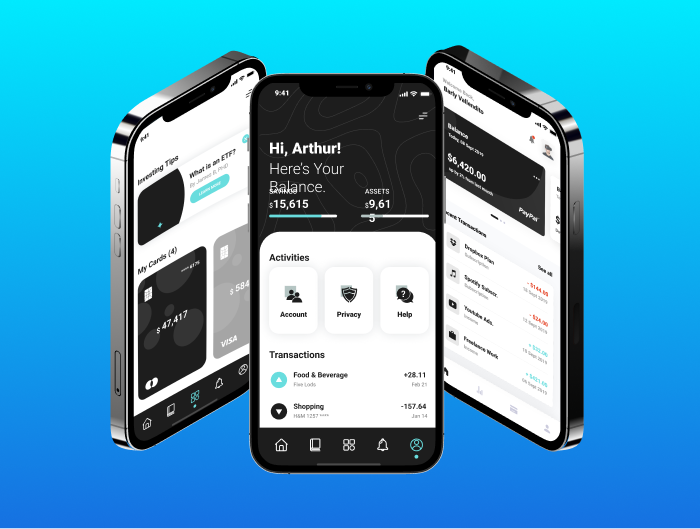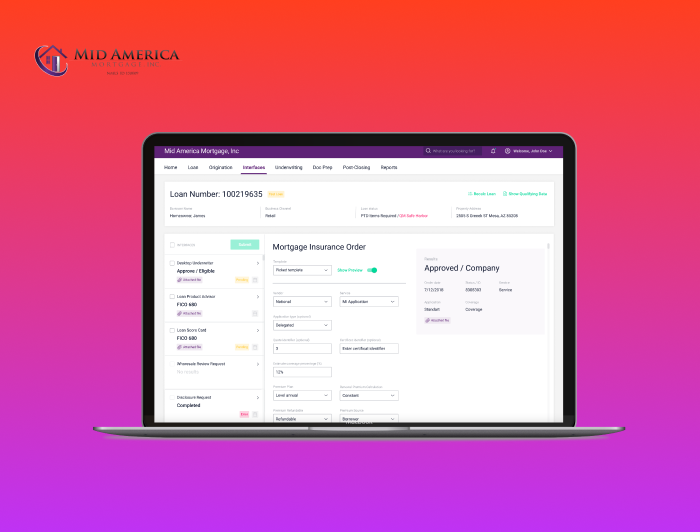
10 Best Practices for Fintech Application Development Security
When it comes to big money, there are always many threats. That’s why such a trendy thing as the fintech industry may seem a risky domain. Various payment systems and fintech apps are popular targets of cybercriminals, while an average security breach may cost a software company up to $4 million. Fortunately, security best practices for fintech application development are here to help and protect financial technology businesses from such threats. Read this article to know more about fintech app security and understand what security features must a fintech app have to prevent hacking.
The Main Safety Challenges in Fintech Application Development
Fintech app development is associated with many challenges. Let’s briefly enumerate the most valuable ones to help you understand what to expect while creating a fintech application.
- Data protection. Most software development specialists will tell you that providing a secure gateway in the virtual space is a very complex task. The bad thing is that problems are often hidden before a data breach occurs.
- Integration of third-party services. Most fintech apps integrate with a great range of third-party services. This enhances their functionality but creates additional vulnerabilities.
- Architecture complexities. Some fintech apps have extremely complex cloud infrastructures. In such cases, some parts of the infrastructure and their connections may be difficult to supervise.
- Malware development. Fintech is a very lucrative industry for various cybercriminals. That’s why malware is constantly developing to overcome the most advanced fintech software safeguards.
- The legal side of the question. The fintech industry is governed by many regulations, such as the European GDPR or UK’s FCA. Navigating all of them, as well as a great set of legal considerations, may be a very challenging task.
Human error. Remember that even the most secure fintech apps require their users to be extremely cautious with password management, authorization, and accessing the apps from different devices. That’s why promoting safety practices and awareness among the users of fintech apps is mandatory.
A Few Examples of Notable Fintech Safety Breaches
Let’s mention numerous fintech security breaches that have been especially costly for software owners.
- In 2005, Card System Solutions got 40 million credit card accounts breached.
- In 2014, the data breach of Heartland Payment Systems affected almost 130 million of the company’s payroll customers.
- The 2017 Equifax breach affected 143 million accounts in the U.S.
- In 2019, Earl Enterprises acknowledged the theft of 2 million credit card numbers.
What unites all these cases is the remarkable damage to the reputation of the companies that have made these breaches possible.
10 Security Best Practices for Fintech Application Development
If you don’t want to repeat the fate of the above-mentioned companies, you must invest in the best cybersecurity practices. This notion can incorporate a great list of technical stuff. Without diving too much into the technical side of this question, check out this list of must-have practices to follow in fintech application development.
1. Data encryption and tokenization
Data encryption means that you make some data unreadable to unauthorized users. Some popular encryption approaches include:
- RSA – provides public and private encryption keys;
- TwoFish – all data is encrypted into 128-bit blocks;
- 3DES – ciphers data three times on a loop;
- Tokenization – creates an encrypted token vault, which is a storage for a token key required for accessing the encrypted data.
2. Safe code development practices
People often forget that app security starts with code security. It is vital to ensure that software developers follow simple yet vital safety practices while writing the app’s code. These practices include:
- Working on input validation;
- Avoiding data shares with external networks;
- Using frameworks’ built-in safety mechanics;
- Preventing broken access control;
- Installing code signing certificates for stronger hashing;
- Protecting the code from SQL injections.
3. Infrastructural security practices
Also, don’t forget to start building your fintech application security from the infrastructure security stage. First of all, this implies building a perimeter defense that involves multiple proxy servers and firewalls. Also, create secure mechanics for managing, monitoring, and maintaining your servers and third-party services integrated with your app. Other tips include making your application infrastructure failover redundant, using the HTTPS SSL certificate, and using an additional VPN layer to improve your application’s safety.
4. Secure authentication technologies
Authentication is where even the most security-oriented software companies fail. To avoid such problems, you should apply the following authentication technologies:
- One-time password systems for the most critical cases;
- Password change notifications;
- Login and logout monitoring;
- The limited time of login sessions;
- Adaptive authentication mechanics.
5. DevSecOps
Here is one of the application security best practices that are especially suitable for continuous app development. It requires you to include security-oriented initiatives throughout all stages of the application development process. Roughly every step in your fintech application’s continuous development is supplied with security-oriented practices and actions. And don’t forget about safety-focused testing, which helps you ensure that no security gap is missed.
6. Security-focused testing stages
This doesn’t mean that you should make all your QA processes focused on security exclusively. But it means expanding it with security-centered practices. These include:
- Network security testing;
- Client-side safety testing;
- Server security testing.
7. Secrets management
Data is not the only asset you should protect while running your fintech app. You should also pay much attention to secret management. It goes about handling private keys, authentication tokens, passphrases, and other protected metadata that is used in applications. The best way to securely store those secrets is to go with encrypted vaults, such as:
- AWS Secrets Manager
- Docker Secrets
- Azure Key Vault.
8. Build API security
To keep your application safe, you must pay attention to the security of its APIs. So, be extremely cautious when it comes to API keys and tokens. The essentials of this approach include:
- Regular rotation of API tokens;
- Use tried and trusted banking APIs;
- API security stack should include three essential measures, namely identification, authentication, and authorization.
9. Use payment blocking
Even if the intruders have managed to break through the main safeguards of your fintech application, it’s not too late to mitigate the outcomes of such a breach. At least, you can protect the money of your users with a payment-blocking feature. It can be launched in the following cases:
- Payment from or in an unusual place;
- An unusual amount of money used during a transaction;
- Multiple suspicious transactions within a limited time period.
10. Educate your customers
To reduce the threat of human-error-driven security breaches, pay attention to user education. At least, supply your application with educational content that will teach your users to follow the basic data and information security practices, such as:
- Avoiding app usage on public Wi-Fi networks;
- Using VPN as an added security measure;
- Changing passwords from time to time;
- Avoiding using the same password for different apps;
- Using anti-virus software.
Wrapping Up
So, this was the list of the 10 best fintech app security solutions and practices. Make sure to implement them while delivering your own financial industry solution. Surely, don’t hesitate to go beyond this list and implement even more practices for a more seamless application safety. And if you need an experienced team to handle the technical side of the question, ask our team for help. We are ready to handle your most significant software development challenges in style.
Latest Insights
Stay informed on the latest updates and trends to follow in financial services, digital transformation and software development from NerdySoft





